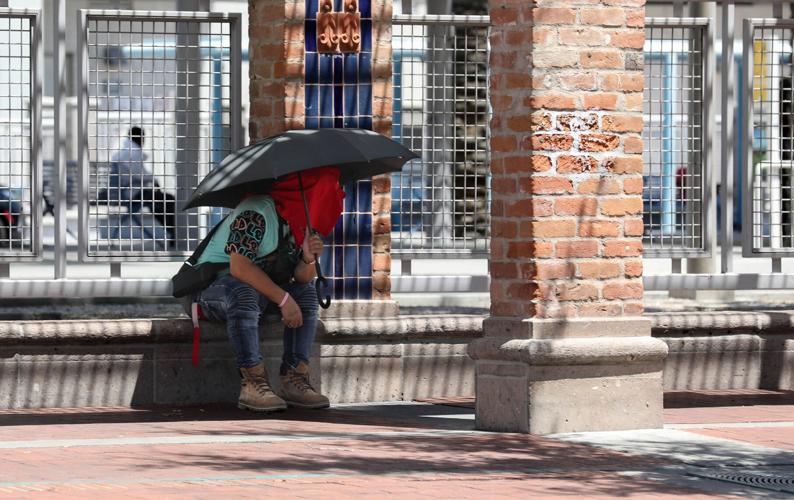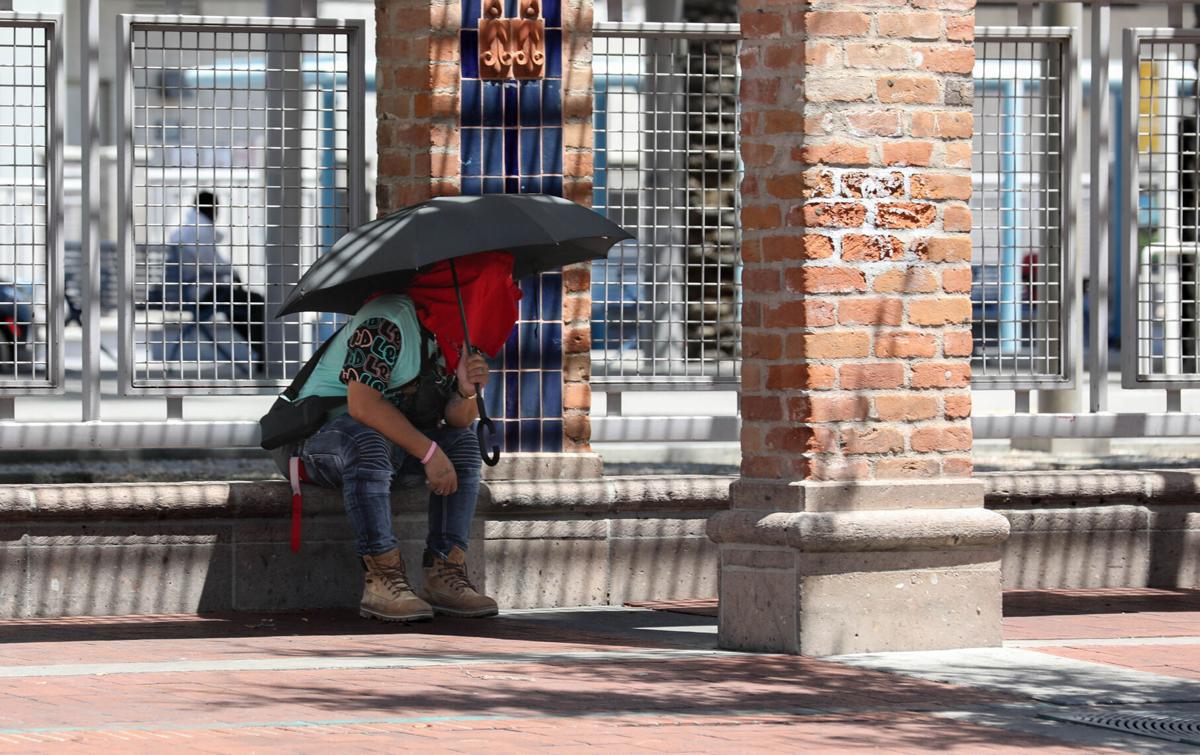It’s one thing to defend your hometown.
That’s a natural reaction when outsiders tell the world that the place where you live is becoming unlivable, as national reporters have been saying about Phoenix and Arizona during this heat wave.
It’s another thing to say, as state Sen. Justine Wadsack said this week on Twitter, that “This weather is normal.”
Wadsack, a Tucson Republican, was one of a series of conservative Arizona critics of the reporting on our heat wave last week. They tried to push back on the idea that Arizona’s heat is unusual, that it reflects the globe’s warming and requires some sort of action.

State Sen. Justine Wadsack, a Tucson Republican, was among many conservatives denying that Arizona's record-setting heat wave had anything to do with climate change.
State Rep. Justin Heap, a Republican from Mesa, put it this way on Twitter: “Apparently the national media has decided we are all insufficiently frightened about climate change so it’s time to portray normal summer heat as the apocalypse.”
Alarmists, he went on, are “trying to frighten us so they can take command of our economy in the name of curbing carbon emission.”

Rep. Justin Heap, a Mesa Republican, argues that even though Phoenix and other places in Arizona are breaking heat records repeatedly, the weather is not hotter than usual.
The thing is, they’re wrong: This weather is not normal. Phoenix broke high-temperature records four days out of six between July 15 and July 20. The city also experienced record high low temperatures — 10 days in a row above 90 degrees, which is more than the seven that Phoenix averages in a year.
In Tucson, the high temperature was a record every day from Sunday through Saturday -- a full week. That is not normal, especially when it’s also happening around the northern hemisphere.
When I pointed out the many records broken to Heap, he responded, “Breaking records is very normal. Weather records are being broken every day somewhere.”
Yeah, but they’re being broken here, now in bulk. As my colleague Tony Davis reports today, the signals from the warming climate are clear. It’s a question of whether we will hear them.
A sense of acceptance
It’s possible to dismiss hot weather in Arizona because, of course, Arizona is usually hot in the summers.
When I went out and talked to people living in mobile homes and working outside about 12 days ago, I found a sense of acceptance that this is the way summer in Tucson is, even if it is getting hotter than normal.
At the time, there was a chance the humidity would creep up, clouds would form, and they would cut off the heat wave before it really set in. That didn’t happen. Even the day it really rained in Tucson, Monday July 17, we tied the record high temperature of 111 degrees Fahrenheit.
It’s normal that there would be a hot high-pressure ridge, or “heat dome,” over Arizona before the monsoon sets in, but what we’re experiencing is abnormal and part of a global pattern, UA Professor of Hydrology and Atmospheric Sciences Christopher Castro told me.
“These big high-pressure domes, these heat domes, are getting larger and more intense,” Castro said. “It’s a pattern of intensifying heat waves that we’re seeing all over the world.”
A series of them have built up around the northern hemisphere this month, setting records at similar latitudes around the world, on land as well as in the hot North Atlantic and Gulf of Mexico.
“If you’re under an intense high pressure ridge, you’re going to experience a heat wave, but if you’re on either edge of that ridge, you’ll see rainfall, and the rainfall will be more extreme,” he said.
As heat spreads, especially near the poles, the melting of ice and warming of oceans may change circulation patterns.
“It makes the jet stream more wavy and (creates) more tendency toward these blocking patterns, where you get the jet stream stuck in one configuration for a period of time.”
The scarier thing is, this is just the beginning — we have no idea how much change will happen before the climate stabilizes again and how much damage it will do.
But even as we experience the onset of real climate change, a chorus of gaslighters is trying to stop us from even acknowledging it, let alone doing something about it.
On Fox Business, professional climate-change denier Marc Morano put it this way: “They are weaponizing hot summer, heat waves, to turn it into some kind of climate action.”
Disinformation effort
What’s really been going on for years is the opposite. A disinformation effort by the fossil-fuel industry has deliberately sowed confusion over climate science. In part as a result, public opinion has become polarized over climate change as with just about every other issue in American society.
The House Oversight Committee revealed the results of an investigation in December, showing that even as the fossil fuel industry discussed oil and natural gas as “bridge fuels” to a renewable future, they were simultaneously planning to sustain production for years in order to maintain profitability.
So now, thanks in part to these industry efforts, when evidence of the climate emergency arises, there is a kneejerk instinct on the political right to deny or rationalize its existence. That’s too bad, because you can’t address a problem if you don’t acknowledge its existence first.
For the sake of Arizona’s economy, not to mention the plants and animals, we need our public officials to stop the kneejerk denialism and grapple with the problem.
Sen. Mark Kelly, the Tucson Democrat, tweeted an innocuous statement Friday about the issue.
“Arizonans are used to the heat, but this heat wave has been particularly brutal. That’s why we’re working hard to combat the climate crisis by investing in innovative solutions and building a clean energy economy for the future.”
A Kari Lake campaign account (still operating all these months after her loss) responded:
“Mark, we know you’re from Texas so you don’t really know how the weather works out here. But we live in a desert. It gets hot.”

When U.S. Sen. Mark Kelly, the Tucson Democrat, pointed to the record heat as a reason to work to "combat the climate crisis," Kari Lake's campaign Twitter account responded that it's just "hot."
Separately, Wadsack flippantly said via Twitter: “If ya can’t stand the heat in Arizona, you’re welcome to leave.”
Wadsack works as a Realtor. Can you imagine the catastrophe in her industry, and our economy, if people start to leave in numbers because of the increasing heat?
Denying the problem only hurts ourselves in the long run.








